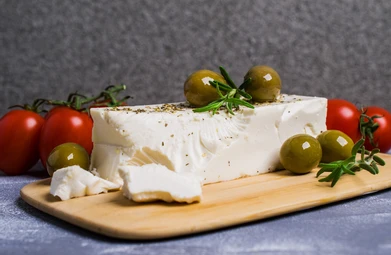Lactic cheese is one of the oldest and simplest kind of cheese. It can be made from cow’s or goat’s milk. As one of the most versatile type of soft cheese, it can be used as a cheese spread or as an ingredient for desserts. This cheese is easy to make and is perfect for beginners in cheese making. Here is how you can make your own lactic cheese.
Ingredients
3.7 L whole milk (not ultra-pasteurized)
¼ teaspoon Danisco MM100 Mesophilic Starter Culture
2 drops of liquid animal rennet or 3 drops of vegetable rennet in 1/3 cup water (non-chlorinated)
¼ tsp Calcium Chloride (use only for pasteurized milk)
cheese salt (optional)
Equipment
a good thermometer
ladle
cheese cloth or butter muslin
draining mold and draining mat
Instructions
1. Heat the milk to 360 C.
2. Sprinkle the mesophilic culture over the surface of the milk.
3. Leave the culture to rehydrate for 3 to 4 minutes.
4. Stir gently in an up and down motion.
5. Add the rennet and stir again in an up and down motion for 1 minute.
6. Cover the pot and leave it to set for 16 to 24 hours. The thermal mass of the milk should keep the milk warm. However, if you have a cooler room temperature, keep the milk at 20 to 220 C so milk coagulation does not slow down.
7. After the setting time, the curd should look like yogurt but slightly firmer.
8. Line the colander with cheese cloth or butter muslin.
9. Ladle the curds into the colander.
10. Pull up the corners of the cheese cloth and tie it to make a bag.
11. Hang the bag of cheese over the sink or a large bowl.
12. Drain for 12 to 24 hours until you reach your desired consistency.
13. Put the cheese in a bowl and add some salt. Add some herbs if desired.
14. Cover the bowl and put store the cheese in the fridge.
Putting the Cheese in Molds
1. Another option is putting the curds in a draining mold.
2. Let it drain for 24 hours.
3. Turn the cheese in the mold with the moister side up.
4. Add salt.
5. Wait for 4 hours to allow complete absorption of the salt.
6. Turn the cheese again and repeat the process.
7. Take the cheese out of the mold and dry for another day. Make sure to provide appropriate airflow.
8. Add preferred herbs and spices.
Lactic cheese should be consumed in a span of 2 weeks.
How to Use Lactic Cheese
- as dressing and dip.
- as bread or pizza spread
- as an alternative to cream cheese in cheesecake or ricotta in lasagna.
Starting a Cheese Business?
Cheese Kettle also offers brewing and dairy consultancy services. If you are planning to start a cheese production business, we can help you kick off your business with our comprehensive starter report and hourly consultancy services. We also provide high-quality dairy processing equipment.
Contact us today.







